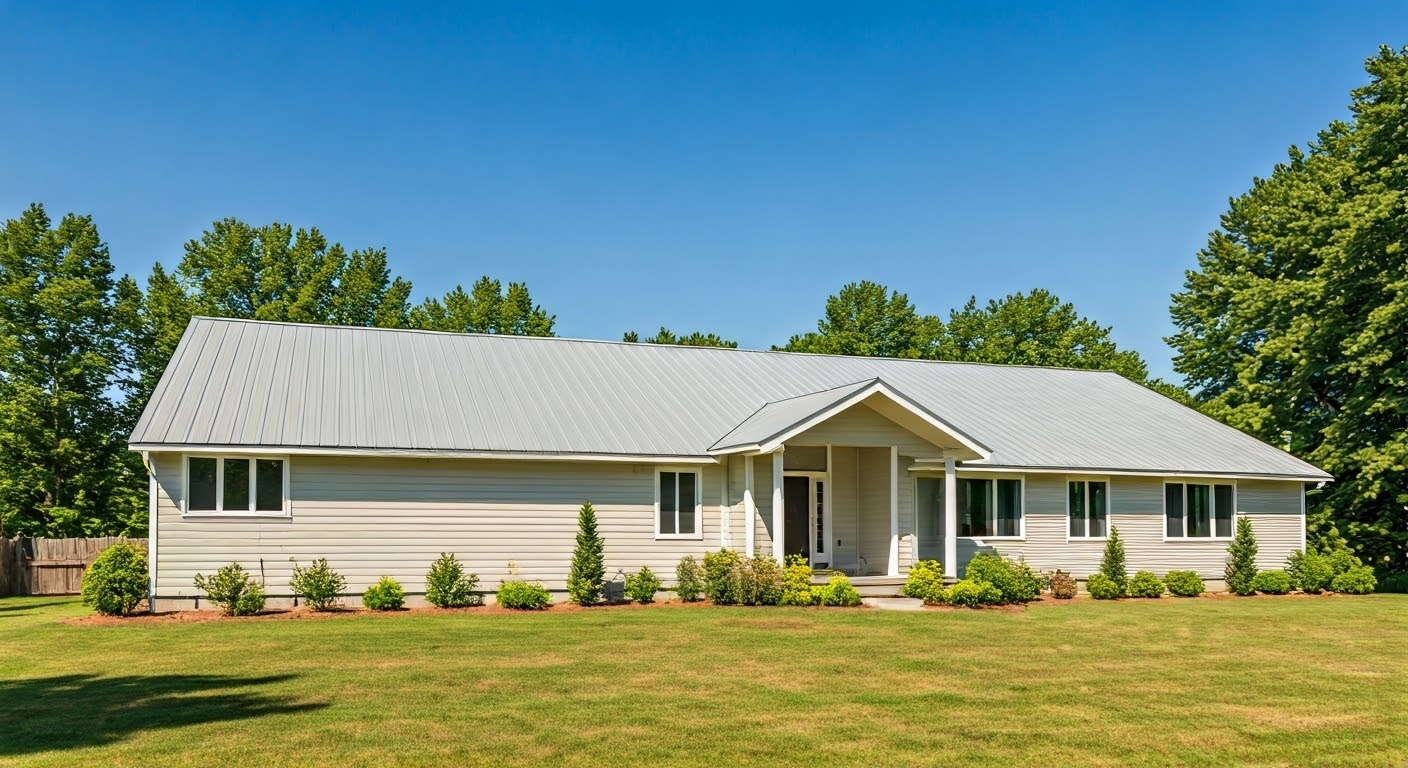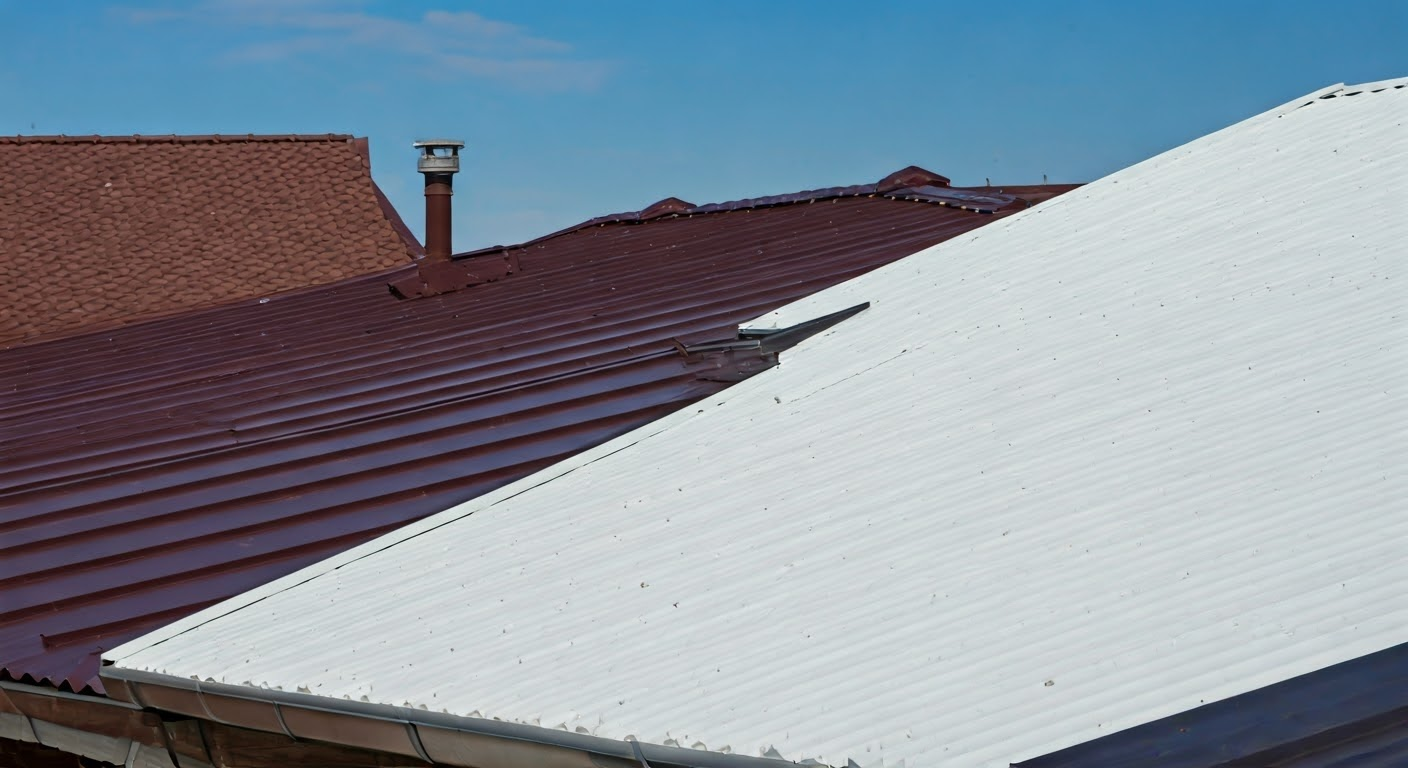
Key Highlights
- The color of a metal roof significantly influences its energy efficiency by affecting heat absorption and reflectivity.
- Lighter colors enhance solar reflectance, which can help keep homes cooler and reduce energy costs.
- Optimal choices for energy-efficient metal roofs typically include colors like white, light gray, and beige due to their superior performance.
- Case studies demonstrate that selecting the right roof color contributes to tangible energy savings and lower utility bills.
- Understanding the relationship between roof color and energy consumption is essential for making informed decisions regarding home improvements.
Introduction
Determining the right color of your roof for your metal roof significantly influences energy efficiency and overall comfort within your home. The interplay between roof color and heat absorption plays a crucial role in managing indoor temperatures, especially in hot climates. Lighter metal roof colors, known for their higher solar reflectance, can contribute to lower energy bills and energy savings year-round. As you explore your options, consider how your choice not only impacts utility costs but also enhances the curb appeal of your property.
Understanding Roof Color and Energy Efficiency
 Color significantly influences energy efficiency, especially when it comes to roofing. Lighter-colored roofs, often termed “cool roofs,” demonstrate higher solar reflectance, minimizing heat absorption during hot summer months. In contrast, darker colors tend to retain much heat, resulting in increased indoor temperatures and higher energy consumption for cooling. The choice of metal roof color not only impacts energy costs but also contributes to the home’s overall architectural style and curb appeal, making it a vital consideration for homeowners.
Color significantly influences energy efficiency, especially when it comes to roofing. Lighter-colored roofs, often termed “cool roofs,” demonstrate higher solar reflectance, minimizing heat absorption during hot summer months. In contrast, darker colors tend to retain much heat, resulting in increased indoor temperatures and higher energy consumption for cooling. The choice of metal roof color not only impacts energy costs but also contributes to the home’s overall architectural style and curb appeal, making it a vital consideration for homeowners.
The Role of Color in Heat Absorption
Color plays a crucial role in how roofs absorb heat, directly influencing energy efficiency. Lighter colors possess higher solar reflectance, minimizing heat absorption and reducing energy costs during hot summer months. In contrast, darker roofs tend to absorb much heat, leading to elevated indoor temperatures and higher utility bills. Choosing the right roof color not only supports energy savings but also enhances overall indoor comfort. Understanding this dynamic is essential for homeowners seeking to optimize their metal roofing choices.
Reflectivity and Why It Matters
Reflectivity plays a crucial role in determining a metal roof’s energy efficiency. Higher solar reflectance, as highlighted by the Cool Roof Rating Council, means less heat absorption, allowing homes to stay cooler during hot summer months. This reduces the reliance on air conditioning, leading to lower energy bills. Additionally, a roof with a high solar reflectance index (SRI) contributes to improved indoor comfort by minimizing heat transfer. Choosing metal roofing with effective reflectivity not only enhances energy savings but also aligns with sustainable home design, making it a popular choice among homeowners.
Optimal Metal Roof Colors for Energy Conservation
Selecting the right cool metal roofing color plays a significant role in maximizing energy conservation. Lighter-colored options, such as white, light gray, and beige, enhance solar reflectance, effectively reducing heat absorption. This results in notable energy savings and lower utility bills, particularly in hot climates. Conversely, darker cool metal roofing colors tend to absorb much heat, increasing energy consumption and potentially leading to higher energy costs. Choosing a roof that meets both aesthetic desires and energy efficiency goals can considerably improve indoor comfort year-round.
Benefits of Light-Colored Metal Roofs
Light-colored metal roofs offer remarkable advantages, particularly in enhancing energy efficiency. By reflecting solar radiation, these roofs significantly reduce heat absorption, leading to lower indoor temperatures during hot summer months. This reduction in heat buildup can translate into lower energy bills, making light-colored options not only eco-friendly but also economically savvy. Furthermore, the aesthetic appeal of lighter colors complements various architectural styles while boosting curb appeal, making them a popular choice among homeowners seeking a balance of functionality and style.
Top Energy-Efficient Colors to Consider
Selecting the ideal color for a metal roof significantly influences energy efficiency. Lighter shades, such as white, cream, or pale gray, reflect solar radiation effectively, minimizing heat absorption and reducing cooling costs in hot climates. These colors typically have a higher SRI (solar reflectance index), ensuring your home remains cooler during scorching summer months. Additionally, they demonstrate a higher SRI in comparison to darker shades. Conversely, earthy tones can also offer some benefits while adding aesthetic value. It’s essential to strike a balance between personal preferences and energy savings for overall indoor comfort.
How Metal Roof Color Impacts Your Energy Bills
Significant variations in energy costs often stem from the color of your metal roof. Darker roofs tend to absorb more solar radiation, resulting in heat buildup that can elevate indoor temperatures and, consequently, energy consumption. In contrast, lighter metal roof colors reflect solar energy, promoting a cooler home environment during hot summer months. Additionally, compared to darker asphalt shingles, this reduction in heat transfer translates into lower utility bills, offering not only immediate cost savings but also long-term benefits to overall energy efficiency and interior comfort.
Comparative Analysis of Dark vs. Light Roofs in Energy Consumption
Energy consumption can vary significantly between dark and light metal roofs. Darker colors absorb more solar radiation, leading to increased heat buildup during hot summer months, which can raise indoor temperatures and subsequently, utility bills. In contrast, lighter-colored roofs enhance solar reflectance, promoting a cooler indoor environment and resulting in lower energy costs. This difference makes light-colored roofs a popular choice for energy efficiency, especially in warmer climates where reducing heat transfer plays a crucial role in overall energy conservation.
Case Studies: Real Home Energy Savings
Real-world examples illustrate the energy savings achievable with different metal roof colors. One homeowner in Arizona reported a 25% reduction in energy costs after switching to a light-colored roof, highlighting significant decreases in heat absorption. In contrast, a family in Texas noted that their dark roof led to increased cooling expenses during hot summer months. These case studies emphasize the importance of selecting the right color metal roofing, showcasing how thoughtful choices can yield substantial benefits for indoor temperatures and utility bills.
Conclusion
Choosing the right metal roof color is crucial for optimizing energy efficiency in your home. Lighter colors often outperform darker tones in terms of solar reflectance and heat absorption, leading to lower energy bills and improved interior comfort. This decision not only ensures significant energy savings but also enhances the curb appeal of your property. By investing in the right metal roofing colors that align with your personal preferences and local climate, you can achieve a harmonious balance of style and functionality.
At Metal Roof Mobile AL, we ensure our clients receive the best possible outcomes. Our commitment to quality workmanship and customer satisfaction is unwavering, making us the top choice for residential Roofing services in our community.
Frequently Asked Questions
What are the top three metal roof colors for energy efficiency?
The top three metal roof colors for energy efficiency are white, light gray, and beige. These lighter shades reflect more sunlight, reducing heat absorption and lowering cooling costs. Choosing these colors can significantly impact energy consumption and enhance home comfort during warmer months.
